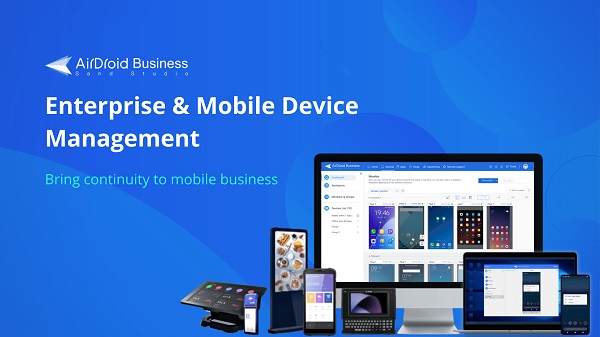How Zero-Touch Automation Works in IT Environment
Technology has made hundreds of processes easier for humans to navigate the world we live in. One of the best and most helpful aspects of technology is the ability to automate. Through automation, people can make computer tasks complete themselves. More specifically, in IT, zero touch automation is a way to eliminate hands-on hours of IT work.
In this guide, we’ll discuss zero touch automation and its role in IT environments, how it can simplify processes, and how you can take advantage of using zero touch automation in your workplace.
1 What is Zero Touch Automation?
When it comes to looking for a definition of what zero touch automation is, you may pull up a variety of results for ‘zero touch automation meaning.’ The truth is zero touch automation depends on the environment it is implemented in. More broadly, zero touch automation is a term that encompasses automation processes in IT, such as software installation and updates, device provisioning and configuration, and network management.

The process can be implemented with automatic workflows using an MDM or a SaaS management platform to schedule processes so that human IT professionals don’t have to do them. Zero touch automation can handle operations that are simple or complex, but most importantly, it is designed to save time.
So, whether you use zero touch automation to send out calendar invites automatically or to create employee accounts, the work done in the short term to automate IT tasks saves time in the long term.
Zero touch automation is also commonly referred to as zero-touch deployment.
As with anything in the world of IT, there are pros and cons of adding zero touch automation to your IT infrastructure. Let’s cover some of the benefits of zero touch automation and its limitations.
Benefits of Zero Touch Automation
- With zero touch automation, systems can handle a large number of tasks in a timely manner and reduce the need.
- Without automation, there is more opportunity for human error, which means that with zero touch automation, you get improved accuracy and reduced errors.
- It frees up time for IT teams, meaning that they can focus on improving other aspects of a company’s IT infrastructure. Also, IT staff can focus on the tasks that absolutely require human input rather than being bogged down with easily automated tasks.
Limitations of Zero Touch Automation
- There are some security concerns possible with zero touch automation, including devices that misconfigure and have gaps in company security policies. However, with necessary IT oversight, zero touch automation is seamless from a security standpoint.
- Zero touch automation can also be resistant to changes because it takes time to implement changes over distances. However, the alternatives to zero touch automation generally take more time.
- A final limitation of zero touch automation is that with managing many devices at the same time, human errors or tech glitches can be magnified, impacting hundreds of users instead of just a few.
2 What Areas Is Zero Touch Automation Often Used?
The zero touch automation approach is often used in IT operations (ITOps), data center security checks, and troubleshooting common IT problems. Automatically managing devices such as employee phones, laptops, and desktop computers is the common use case for zero touch automation.
Cloud computing, including SaaS, also typically use zero touch automation in situations where IT staff and other company devices are separated by significant distances, such as in remote work environments, or have a large number of devices.
Companies can deploy fully set-up devices to their remote workers without needing to set the devices up in person, saving time and resources. They can also use zero touch automation to update devices, revoke user access, and factory reset stolen devices.
3 Comparing Zero Touch Automation and Robotic Process Automation (RPA)
Based on their names, you may be thinking that zero touch automation and robotic process automation fulfill the same needs in IT. However, there are some key differences between ZTA and RPA that set them apart from one another.

Of note, RPA is considered more expensive than zero touch automation. RPA is more expensive because it automates tasks on a computer after being coded to do so. On the other hand, zero touch automation simply follows a set of instructions to do the same thing many times, usually at once. Instead, RPA will typically complete repetitive tasks over and over as dictated by a software.
Zero touch automation configures new devices and updates them according to a configured set of policies rather than a set of rules. ZTA also gives companies access to devices with the means to customize, configure, and control user access, which RPA does not do.
4 How Does Zero Touch Automation Work in IT Processes?
ERP Systems
Enterprise resource planning software can utilize automation to expedite processes and decrease the need for humans to be involved in using the software. Automated ERP systems can use cloud-based storage systems, auto-update applications, and data analysis.
ERP systems can also use automation for automated billing letters, notices, payment reminders, and more. Also, by uploading data to the cloud, remote work is made more feasible for companies.
Updates to ERP systems are necessary for the financial health of a company. Using zero touch automation to update ERP systems for all devices is important for companies to continue billing accurately and without errors that come from apps running old versions.
CRM Systems
Customer relationship management systems can also use zero touch automation to easily expedite tasks and track customer interactions. Applications such as Salesforce offer many opportunities to automate through zero touch automation, such as email integration through an Outlook plugin, meeting tracking, meeting reminders, call logs, click-to-call options, and even contact information displays.
CRMs can also be customized to automate processes and deliver reports from the CRM to an email or data software.
Zero touch automation is a must for companies that rely on their CRMs. Updates and policies need to be standardized, and zero touch automation is the way to do that.
Corporate Network Management
Testing, troubleshooting, and security can also use zero touch automation to oversee. Network administrators can remotely uninstall and reinstall apps that are causing issues from an MDM. Security policies can be rewritten, adjusted, viewed, and enforced through the MDM.
Using zero touch automation enables these processes to happen quickly and expediently and does more than just set up devices. It also gives corporate administrators a bird’s eye view of their company’s devices.
Employee Device Management
Mobile device management (MDM) can use zero touch enrollment for deploying devices, policies, monitoring devices, and generating auto alerts for security, among other things. Mobile devices are just as in need of updates and easy provisioning as laptops and desktop computers.

Businesses that use tablets, Apple products, or Android phones can pre-configure their devices to come standard or “out-of-the-box” with company apps, necessary apps, or even without some applications. Other customization options, such as language, date, and time can be made remotely.
Instead of sending a new employee a brand new device in a box with a large list of instructions and an appointment with an IT professional, the employee can simply turn on the device, connect to a network and watch as the device downloads software, policies, settings, and necessary apps.
MDMs are the backbone of the zero touch automation approach. They allow IT administrations to put changes into effect, save the company money, and focus on tasks that necessitate human interaction. MDMs can be used to add zero touch deployment with devices that support it, logging into the zero touch portal and then using the MDM to set up devices and policies.
5 Can Zero Touch Automation Completely Eliminate the Need for Human Intervention?
At the moment, zero touch automation cannot completely eliminate the need for human intervention. While it does undoubtedly save significant time for IT staff, professionals are still needed to input commands and processes to make zero touch automation work.
Also, kinks always happen with technology which necessitates human intervention on occasion for troubleshooting. IT professionals are needed to step in when things go wrong. For example, a fully deployed laptop may be sent to a new remote employee. While the zero touch automation worked on this laptop, there is a problem with the hardware of the new laptop. In this situation, a human IT employee will still need to intervene and troubleshoot the issue.





Leave a Reply.